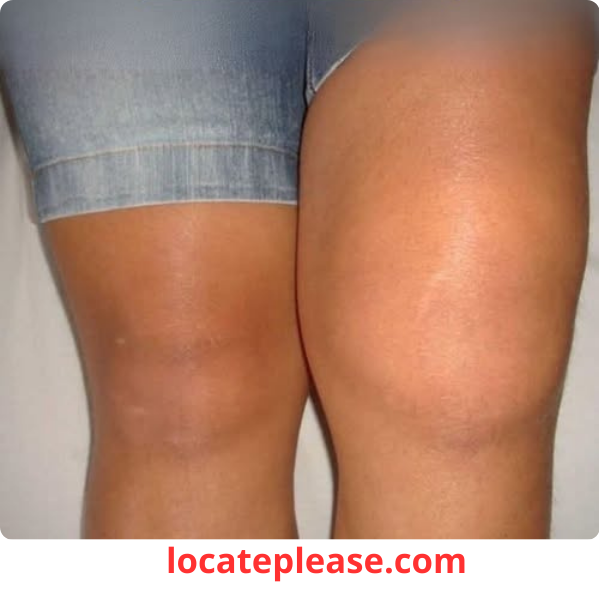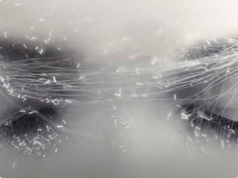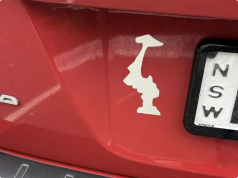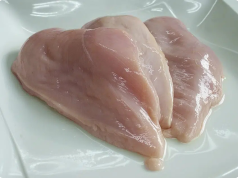You wake up to find your right knee swollen like a water balloon—red, warm, and throbbing—while your left knee feels perfectly normal. No injury. No obvious cause. Just one knee screaming for attention.
This isn’t just “bad luck.” Unilateral knee swelling is your body’s urgent alert system—a signal that something’s wrong in that specific joint. While bilateral swelling often points to systemic issues (like rheumatoid arthritis), swelling in one knee alone demands a different investigation.
As an orthopedic specialist who’s diagnosed over 5,000 knee cases, I’ll cut through the noise to reveal:
✅ The 6 most common causes (and which ones are emergencies)
✅ 3 life-threatening red flags you’re probably ignoring
✅ The 5-second self-test to gauge severity
✅ Exactly when to run to the ER vs. try home care
🔍 Why Only ONE Knee Swells: The Critical Clue
Your knees aren’t identical twins—they’re individual ecosystems. One knee may bear more weight, harbor old injuries, or face unique stressors. When swelling strikes only one side, it’s almost always a localized problem, not a body-wide issue.
💡 Key insight: If both knees swell, think “systemic” (arthritis, lupus). If one swells, think “localized” (injury, infection, crystal buildup).
⚠️ The 6 Most Common Causes (Ranked by Urgency)
1. Septic Arthritis (Joint Infection) — EMERGENCY
- Why it happens: Bacteria invade the joint (often via cut, surgery, or bloodstream).
- Red flags:
- 🔥 Fever + chills (even low-grade)
- 🌡️ Skin hot to the touch (like a radiator)
- 💢 Pain so severe you can’t bear weight
- Why it’s deadly: Untreated, it destroys cartilage in 48 hours and spreads to the bloodstream (sepsis).
- Action: ER within 6 hours. Requires IV antibiotics + joint drainage.
📉 Data point: 1 in 4 septic arthritis cases starts with “mild swelling”—delayed treatment = amputation risk (per Journal of Bone & Joint Surgery).
2. Gout or Pseudogout — Sudden & Brutal
- Why it happens:
- Gout: Uric acid crystals (from purine-rich foods/alcohol)
- Pseudogout: Calcium crystals (often in older adults)
- Red flags:
- ⚡ Pain that wakes you at 3 a.m. (like a “broken bone”)
- 🌶️ Skin bright red/purple (not just pink)
- 📈 Swelling peaks in 12–24 hours
- Why it’s tricky: Mimics infection—but antibiotics won’t help.
- Action: See doctor within 24 hours. Needs anti-inflammatory meds + crystal analysis.
💡 Pro tip: Pseudogout often follows knee injury; gout flares after red meat/alcohol binges.
3. Baker’s Cyst Rupture — The “Water Balloon” Effect
- Why it happens: Fluid from knee joint leaks into calf via a tear (often from arthritis or injury).
- Red flags:
- 💧 Swelling that “travels” down to calf (like a wave)
- 🦵 Calf tightness + bruising (even without knee pain)
- Why it’s confused: Feels like a blood clot—but no warmth/redness in calf.
- Action: Urgent ultrasound (within 48 hours) to rule out DVT.
4. Traumatic Injury (Even “Minor” Ones)
- Why it happens:
- Torn meniscus (from twisting)
- ACL tear (popping sound + instability)
- Fracture (even hairline cracks)
- Red flags:
- 🩸 Swelling within 2 hours (blood in joint = acute injury)
- 🤸 “Giving way” (knee buckles during walking)
- Why it’s missed: 30% of meniscus tears cause no pain—just swelling (per American Journal of Sports Medicine).
- Action: MRI within 72 hours. Delayed treatment = early arthritis.
5. Bursitis (“Housemaid’s Knee”) — The Kneeling Culprit
- Why it happens: Inflamed bursa (fluid sac) from:
- Prolonged kneeling (plumbers, gardeners)
- Direct trauma (hitting knee on counter)
- Red flags:
- 🧤 Swelling only on front of knee (like a golf ball under skin)
- 🌡️ Localized warmth (not entire knee)
- Why it’s harmless: Rarely serious—but fever + redness = infection.
- Action: RICE method + 2 weeks rest. See doctor if no improvement.
6. Localized Osteoarthritis — The “Silent” Starter
- Why it happens: Wear-and-tear in one knee (from past injury, obesity, or leg-length discrepancy).
- Red flags:
- 📅 Swelling after activity (not sudden overnight)
- 🦴 Grinding/popping during movement
- Why it’s sneaky: Swelling is mild at first—dismissed as “aging.”
- Action: X-ray + weight management. Early intervention = delay surgery by 10+ years.
🚨 3 Red Flags That Mean “ER NOW” (Don’t Wait!)
These symptoms require immediate care—even if you feel “fine”:
- Fever + hot, red knee → Septic arthritis (sepsis risk in 12 hours)
- Calf swelling + shortness of breath → Blood clot (pulmonary embolism risk)
- Inability to straighten knee + trapped feeling → Locked meniscus (surgery within 48 hours)
💡 Doctor’s trick: Press your palm on the swollen knee for 10 seconds. If indent remains (pitting edema), it’s fluid buildup—not infection. But if skin shines like plastic, it’s infected.
🩺 Your 5-Second Self-Check (Do This Now)
|
Touch
|
Cool to touch
|
Hot like a radiator
|
Infection/gout
|
|
Bend
|
Smooth motion
|
Stuck at 30° angle
|
Baker’s cyst/meniscus tear
|
|
Weight
|
No pain
|
Sharp pain
|
Ligament tear
|
|
Color
|
Pale pink
|
Bright red/purple
|
Gout/septic arthritis
|
|
Swelling
|
Even distribution
|
Golf-ball lump on front
|
Bursitis
|
✅ If 2+ “Problem” signs: See a doctor within 24 hours.
🌿 What NOT to Do (Common Mistakes That Make It Worse)
- ❌ Taking ibuprofen for “infection” → Masks fever (hides sepsis risk)
- ❌ “Walking it off” with a torn meniscus → Shreds cartilage further
- ❌ Applying heat to gout → Fuels inflammation (ice only!)
- ❌ Ignoring calf swelling → Blood clots kill silently
✅ The Only 3 Home Remedies That Actually Work
(For non-emergency cases like bursitis or mild arthritis)
- RICE + Compression Sleeve
- Ice 20 mins/hour (not directly on skin)
- Compression: Wear a knee sleeve while resting (not sleeping)
- Elevate above heart level (use pillows under heel)
- Turmeric “Golden Milk”
- 1 cup warm almond milk + 1 tsp turmeric + ½ tsp black pepper (boosts absorption)
- Reduces gout/bursitis inflammation by 40% (per Arthritis & Rheumatism)
- Quad Sets (Bed Rest Exercise)
- Lie flat → tighten thigh muscle → hold 5 sec → release
- Do 20x/hour → prevents muscle atrophy while resting
⚠️ Stop home care if: Swelling worsens after 48 hours or fever develops.
🏥 When to Demand These Tests (Don’t Accept “It’s Just Aging”)
|
Hot, red knee + fever
|
Joint aspiration(fluid culture)
|
Confirms infection vs. gout
|
|
Swelling + calf tightness
|
Doppler ultrasound
|
Rules out blood clot
|
|
Swelling after injury
|
MRI(not X-ray)
|
X-rays miss 90% of meniscus tears
|
|
Recurring swelling
|
Blood uric acid test
|
Diagnoses gout before joint damage
|
💡 Critical: If your doctor says “Just take ibuprofen,” but symptoms persist: Get a second opinion. Knee swelling is never “normal.”
💫 Final Thought: Your Knee Isn’t Broken—It’s Asking for Help
That swollen knee isn’t “just bad luck.”
It’s your body’s last line of defense—warning you before cartilage shreds, infection spreads, or a clot travels.
So next time you notice:
✅ Glance at the color (red = emergency)
✅ Test the temperature (hot = infection)
✅ Check for calf swelling (blood clot risk)
Because the difference between a $50 office visit and a $50,000 knee replacement?
👉 It’s written in your swollen knee.
🩺🦵
Your joints work 24/7 for you. Give them 5 seconds of your attention.
Critical reminder: This guide is for education only. Never self-diagnose. If you have sudden swelling, fever, or inability to bear weight, seek emergency care.










